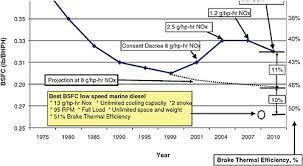 Dow Corning selected the venue of Chinaplas 2017 to launch an advanced new silicone technology designed to resolve mechanical performance degradation and corrosivity issues caused by high loadings of traditional flame-retardant (FR) additives, such as organic phosphorus, in polyamide (PA) compounds.
Dow Corning selected the venue of Chinaplas 2017 to launch an advanced new silicone technology designed to resolve mechanical performance degradation and corrosivity issues caused by high loadings of traditional flame-retardant (FR) additives, such as organic phosphorus, in polyamide (PA) compounds.
By cutting the total amount of organic phosphorus additive in PA6 and PA66 compounds by 40 percent – while still providing high levels of FR performance – the new FR synergist Dow Corning 43-821 Additive used at low levels (1–2%) delivers these important benefits for compounders and electrical/electronic component manufacturers: restoring key mechanical properties of PA resin to their original levels (those prior to additive addition); minimizing corrosion of metallic parts that contact the formulation; and lowering compound costs by 10 percent or more.
“Balancing performance and cost is a compounding challenge that our new Dow Corning 43-821 Additive is helping to address head on,” says Christophe Paulo, global segment leader, Plastics & Composites for Dow Corning. “Not only does this new product optimize highly filled, flame-retardant PA compounds, but it also delivers cost advantages in three major ways: by reducing the required amount of organic phosphorous additive, by delivering high performance at very low loadings and by avoiding the need for over-engineered inherently flame retardant materials.
“Organic phosphorus FRs are typically used at 18% loading levels in PA compounds but this can be reduced to 10–11% through the addition of just 1% of the synergist,” says Paulo. “There is thus less chance to corrode metal and more PA in the compound, which improves mechanical properties.” Normally, conventional dosages of organic phosphorus FRS degrade PA properties by 25–30%, meaning parts must be molded with greater wall thickness to ensure sufficient mechanical strength.
Glass-reinforced PA6 and PA66 compounds are widely used in electrical/electronic applications in the automotive and appliance industries. When selecting an FR additive, many compounders and their customers prefer halogen-free solutions for sustainability and high corrosivity.
Organic phosphorous additives such as aluminum phosphinate – often blended with melamine polyphosphate – are a popular choice, but they have a major drawback: the high loadings (up to 20 percent) that are required to meet regulatory requirements. High phosphorous content in PA compounds can result in the degradation of mechanical properties, such as impact, elongation and maximum force at traction, and still present high corrosivity.
Dow Corning 43-821 Additive was developed to remediate these issues so compounders and manufacturers can continue to benefit from halogen-free organic phosphorous FR additives – without their downsides. Thanks to its flame retardant synergistic effect with metal phosphinates, incorporated at a low loading of 1 to 2 percent, Dow Corning 43-821 Additive allows the loading of FR additive to be reduced by 40 percent, which enables PA’s desirable mechanical properties to be recovered and corrosivity to be minimized.
Although it cuts the amount of FR additive needed, the new Dow Corning product’s synergistic effects on PA resin yield excellent FR properties.
These include char formation, anti-dripping and reduced heat generation. Tests indicate that 30 percent glass-filled PA compounds incorporating 13 wt% of aluminum phosphinate and 2wt% of Dow Corning 43-821 Additive met the requirements for UL-94 V-0 at 1 mm.
source-:https://www.plasticstoday.com/materials/dow-corning-launches-advanced-flame-retardant-synergist-chinaplas-2017/71268007456874







